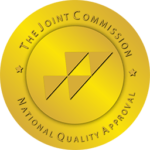Cross-fading is a practice where individuals simultaneously use alcohol and cannabis, though it may also involve other substances like prescription medications or illicit drugs. This combination amplifies the effects of each, producing a more intense and often unpredictable high. While some might seek the heightened effects for recreational purposes, the practice poses significant risks. Alcohol, a depressant, can enhance the sedative effects of marijuana, which may lead to unexpected reactions such as severe impairment in motor skills, decision-making abilities, and overall cognitive functions. The unpredictable nature of cross-fading stems from the way these substances interact in the body, often exacerbating each other’s effects and leading to dangerous levels of intoxication.
The Risks of Cross-fading
Engaging in cross-fading is fraught with risks that extend beyond the immediate pleasure of intensified effects. Physically, mixing substances like alcohol and marijuana can lead to increased heart rate, blood pressure fluctuations, and extreme dizziness. These symptoms can escalate to more serious conditions, such as acute alcohol poisoning or cannabis-induced psychosis, especially in individuals with underlying health conditions or those who consume large quantities.
Psychologically, crossfading can trigger severe anxiety, paranoia, and panic attacks, sometimes resulting in long-lasting mental health issues. Regular engagement in cross-fading may lead to a decreased ability to function without the substances, as the body grows accustomed to their effects, potentially leading to dependency.
Other Commonly Used Drugs To Get Cross-Faded
Benzodiazepines and Alcohol Use
One of the more hazardous combinations involves benzodiazepines (like Xanax or Valium) and alcohol consumption. Both substances are central nervous system depressants, which can lead to an extreme reduction in motor coordination, and cognitive function, and can suppress breathing. This combination significantly increases the risk of fatal overdose due to respiratory depression.
Cocaine and Alcohol
Combining cocaine and alcohol produces a third substance in the liver called cocaethylene, which intensifies cocaine’s euphoric effects but also increases the stress on the heart and the potential for violent thoughts and behaviors. This combination is particularly dangerous because it masks the depressant effects of alcohol, often leading individuals to consume more than they typically would, raising the likelihood of alcohol poisoning.
MDMA (Ecstasy) and Alcohol
MDMA is often used in party settings along with alcohol. While MDMA elevates mood and can induce a feeling of euphoria, it also increases heart rate and body temperature. Alcohol, being a diuretic, can exacerbate MDMA-induced dehydration, potentially leading to severe health issues like electrolyte imbalances, overheating, or heatstroke.
Opioids and Alcohol
The opioid and alcohol combination is another particularly deadly mix due to both substances’ ability to depress breathing. Opioids such as heroin, fentanyl, or prescription painkillers, when taken with alcohol, can lead to life-threatening respiratory depression, increasing the risk of coma or fatal overdose.
Psychedelics and Marijuana
Using psychedelics like LSD or psilocybin mushrooms in conjunction with marijuana can lead to an unpredictable intensification of effects. While some users report enhanced visual hallucinations and a deepened psychedelic experience, others may experience increased anxiety, paranoia, and disorientation, which can be distressing.
Cross-fading and Addiction
Cross-fading, which involves using substances like alcohol and marijuana simultaneously, can enhance each other’s effects and accelerate addiction development. This potentiation is due to increased dopamine release, which reinforces substance use by heightening the pleasure experienced. The compounded use leads to faster tolerance buildup, urging higher dosages for the same effect, thereby hastening physical and psychological dependence. Additionally, the unpredictable interactions between different substances complicate the ability to control consumption, increasing the risk of developing substance use disorders.
Addiction Treatment for Cross-fading
Detoxification and Medical Management
The initial step in treating cross-fading addiction often involves a medical detox, where medical professionals supervise the safe withdrawal from substances. This process is crucial as withdrawal symptoms can be severe and potentially life-threatening, especially when multiple substances are involved. Medical management may include the use of medications to ease withdrawal symptoms, reduce cravings, and treat any co-occurring mental health disorders.
Behavioral Therapies
Behavioral therapies are core components of addiction treatment, helping individuals understand the root causes of their substance use, develop healthier coping mechanisms, and change detrimental behaviors. Techniques such as Cognitive Behavioral Therapy (CBT), Dialectical Behavior Therapy (DBT), and Motivational Interviewing (MI) are commonly used to treat substance use disorders. These therapies can be particularly effective in addressing the complex psychological aspects of cross-fading by helping individuals recognize triggers, improve emotional regulation, and enhance decision-making skills.
Support Groups and Aftercare
Support groups such as 12-step programs or other peer support networks provide ongoing encouragement and accountability, which are vital for long-term recovery. Aftercare programs extend support beyond initial treatment, offering resources such as ongoing counseling, relapse prevention education, and community support services. These programs help maintain the gains made in treatment and provide a safety net in the face of challenges post-rehabilitation.
Family Involvement and Education
Including family members in the recovery process can significantly enhance the effectiveness of treatment. Family therapy sessions educate loved ones about addiction and recovery, teach them supportive skills, and help mend relationships damaged by substance use. Family involvement ensures a supportive home environment, which is crucial for sustained recovery.
Overcome Addiction at True Self Recovery
Understanding the full spectrum of risks associated with cross-fading is essential for prevention and treatment. With the right resources and support, individuals can overcome the challenges associated with this dangerous practice.
If you or a loved one is struggling with addiction or cross-fading, get in touch with True Self Recovery. Our drug and alcohol addiction recovery facility is dedicated to providing individuals with treatment programs where they can overcome the challenges of addiction.
FAQs
What makes cross-fading more dangerous than using a single substance?
Cross-fading intensifies the effects of each substance used, which can lead to severe physical and psychological impairments. The interaction between different substances like alcohol and marijuana can create unpredictable effects, increasing the risk of accidents and health problems.
Can cross-fading affect my long-term mental health?
Yes, cross-fading can have long-term effects on mental health. The use of multiple substances can alter brain chemistry, potentially leading to chronic issues such as anxiety, depression, and other mood disorders.
What are the first steps to take if someone wants to stop cross-fading?
The first step is to seek professional help. Contacting a healthcare provider or addiction specialist can provide guidance on the appropriate treatment options. It’s also important to reach out to supportive friends or family members who can provide encouragement and assistance.
How does cross-fading impact one's legal standing?
Legally, cross-fading can lead to charges such as DUI if an individual is found operating a vehicle under the influence. This can result in significant legal consequences, including fines, jail time, and the loss of driving privileges.
Where can individuals or families get help for cross-fading-related issues?
Help can be found at local addiction treatment centers, mental health clinics, and through online resources. Many organizations offer services specifically designed to address substance abuse and can provide both immediate assistance and long-term support.



